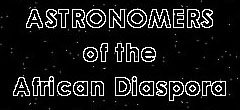

Jason S. Best

born:
place:
pre-doctorate education: Indiana University B.S. Major: Astronomy/Astrophysics Minor: Mathematics (1992)
Doctorate education: Pennsylvania State University Ph. D. Astronomy
& Astrophysics (1997)
thesis: Use of the Pointwise Dimension in an Analysis of Galaxy
Clustering; advisor:
current employment. Assistant Professor of Astrophysics, SHEPHERD COLLEGE Shepherdstown, WV
web page: http://webpages.shepherd.edu/jbest/
email: jbest@shepherd.edu
Dr. Jason S. Best is assistant professor of astrophysics at Shepherd College in West Virginia. He got his Ph.D. in astronomy and astrophysicists at Pennsylvania State University and subsequently taught at Indiana University. He has published 3 or 4 papers and specializes in fractal cosmology and virtual reality. He is a former National Negro Merit scholar and a full member the National Society of Black Physicists.
RESEARCH
Dr. Best's research attempts to address two fundamental problems in cosmology:
The particular behavior of astronomical clustering on multiple scales suggests that the concepts of fractal geometry may apply. The modern motivation for fractal geometry may best be summed up by this quote of Benoit Mandelbrot: ``Mountains are not cones, clouds are not spheres, coastlines are not circles, and bark is not smooth, nor does lightning travel in a straight line''. Fractals are, in simplest terms, objects which are (approximately) self-similar on all scales.
Dr. Best's research focuses on the use of the pointwise dimension (which is based on fractal geometry) to understand both the large-scale structure of the universe and the connection between galaxy morphology and environment.
PAPERS PUBLISHED
references: Fikes: From Banneker to Best: Some Stellar Careers In Astronomy and Astrophysics;
VISITORS since opening
5/27/1997
![]()
| This website was created by and is
maintained by Dr. Scott Williams, Professor of Mathematics State University of New York at Buffalo |
SEARCH the site |
|
|
![]()